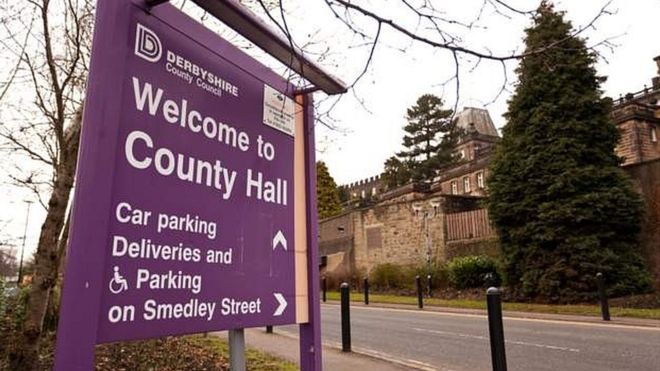
One in 10 of Derbyshire schools are running on a deficit while eight have amassed budgets a total of nearly £2 million in the red.
Derbyshire County Council has published a round-up of schools which say they plan to balance their budgets over more than one year with aims to get themselves out of the red.
The authority says 32 schools are now running on deficits, making up nearly 11 per cent of the 298 schools the council remains responsible for (with many converting to academies due to budget issues).
It calls this “broadly positive”.
In August 2018, the council had said 27 schools out of the then 342 under its control were running on deficits (7.9 per cent).
Of the 32 schools now running on a deficit, seven have put together plans to get themselves back on track over multiple years instead of one, due to their scale.
These seven are:
- Arkwright Primary School, east of Chesterfield (£19,743 in debt)
- Ashbourne Hill Top Primary School (£21,522 in debt)
- Ripley Junior School (£53,588 in debt)
- Charlesworth Primary School (£57,782 in debt)
- Fairmeadows Primary School, Newhall (£141,464 in debt)
- William Allitt School, Newhall (£148,774 in debt)
- Glossopdale Community School (£724,647 in debt)
William Allitt School requires a complete rebuild due to the condition of its buildings, largely constructed in the 60s, its chair of governors Steve Frost has said.
He says the cost of a rebuild – between £17 million and £25 million – would be cheaper than repairing the school in the long run.
The county council does not have the funding to support this and has been pleading with government to give it more money for school repairs and rebuilds for years, along with South Derbyshire MP Heather Wheeler.
It is set to balance its books by 2022.
William Allitt was served an academy order in 2014 by central government due to its falling standards but no academy trust has taken on the project due to the upfront costs needed to repair or rebuild the school, Mr Frost told the Local Democracy Reporting Service in 2018.
This has left the school in limbo, but even if the school moves to an academy, Derbyshire taxpayers and the county council will be left with the bill for its budget deficit.
Since 2014 these deficits left behind by Derbyshire schools have cost the county council, and taxpayers, more than £1 million.
William Allitt has a capacity for 945 pupils, which had fallen to 715 by October 2018 and is set to drop to 607 by this October, leaving it a third empty.
Glossopdale School is also set to become an academy, also due to falling standards and budget woes after years of operating stretched over several sites.
Its deficit has fallen slightly from £746,000 and is set to emerge from the red in 2022
A new Glossopdale School has been built by the council at a cost of £23 million with a further £4 million extension on the way, which the authority and taxpayers will pay for, along with whatever deficit remains, not the trust which takes it over.
The council’s education and finance chiefs, Jane Parfrement and Peter Handford, wrote in a report: “The problems faced by the small number of schools above have to be seen in context. At March 31 2020, the authority was responsible for 298 schools, of which, 32 reported a deficit at the end of 2019-20 – 10.7% of the total – and of these, only one does not yet have an agreed recovery plan.
“Against this broadly positive picture, the current school funding arrangements now present a greater financial risk to the authority.
“If a school with a deficit is required to convert to academy status then that deficit is likely to remain with the authority.
“Extensive work takes place to help schools to avoid getting into deficit. Where a school does have financial difficulties, the need to manage these problems, and the associated risks to the local authority, have to be balanced against the needs of the children currently in the school and the impact on teaching and learning of potential savings strategies.”
One Derbyshire school has not been able to put together a plan to take it out of budget limbo.
New Mills School, a secondary with around 600 pupils, has debts of more than £714,000 – nearly a quarter of its entire budget.
This debt has only reduced slightly since August 2018 when it stood at £740,372
Its debt is set to reduce over the next few years but will still sit at just under half a million pounds by 2023.
New Mills School had been rated “inadequate” (the lowest rating) by education watchdog Ofsted in 2014 but it has since bounced back to “good” (the second highest below outstanding) in 2017.
Ms Parfrement and Mr Handford wrote: “The school continues to work closely with the local authority to address its deficit position and is being supported by the authority’s Team Around The School (TATS) processes. Further meetings of senior local authority officers are planned with the school’s governors and senior leadership teams to identify further measures to recover the deficit.”


 Derbyshire County Council face Parliament finance debate
Derbyshire County Council face Parliament finance debate
 Glossop girl raises money for Kenya trip
Glossop girl raises money for Kenya trip
 The new social enterprise making an impact across the High Peak
The new social enterprise making an impact across the High Peak
 Glossop Arts Project celebrates 10 years
Glossop Arts Project celebrates 10 years

